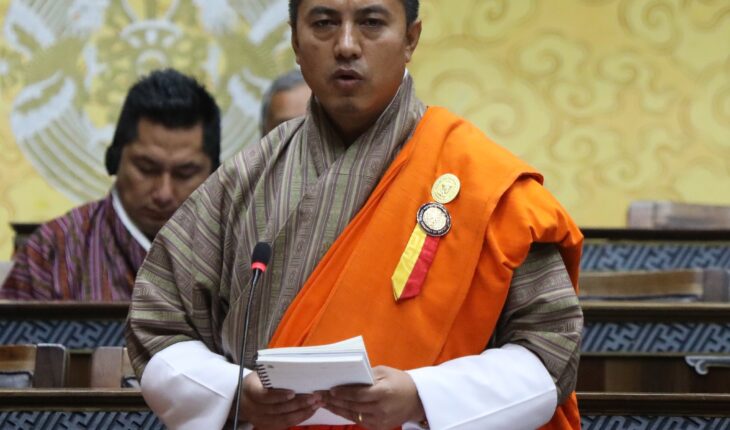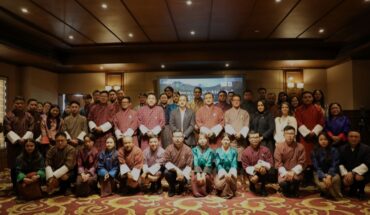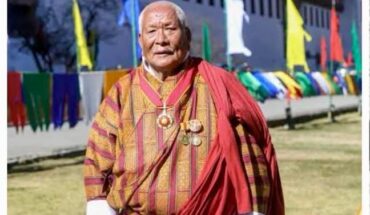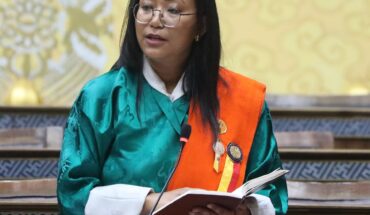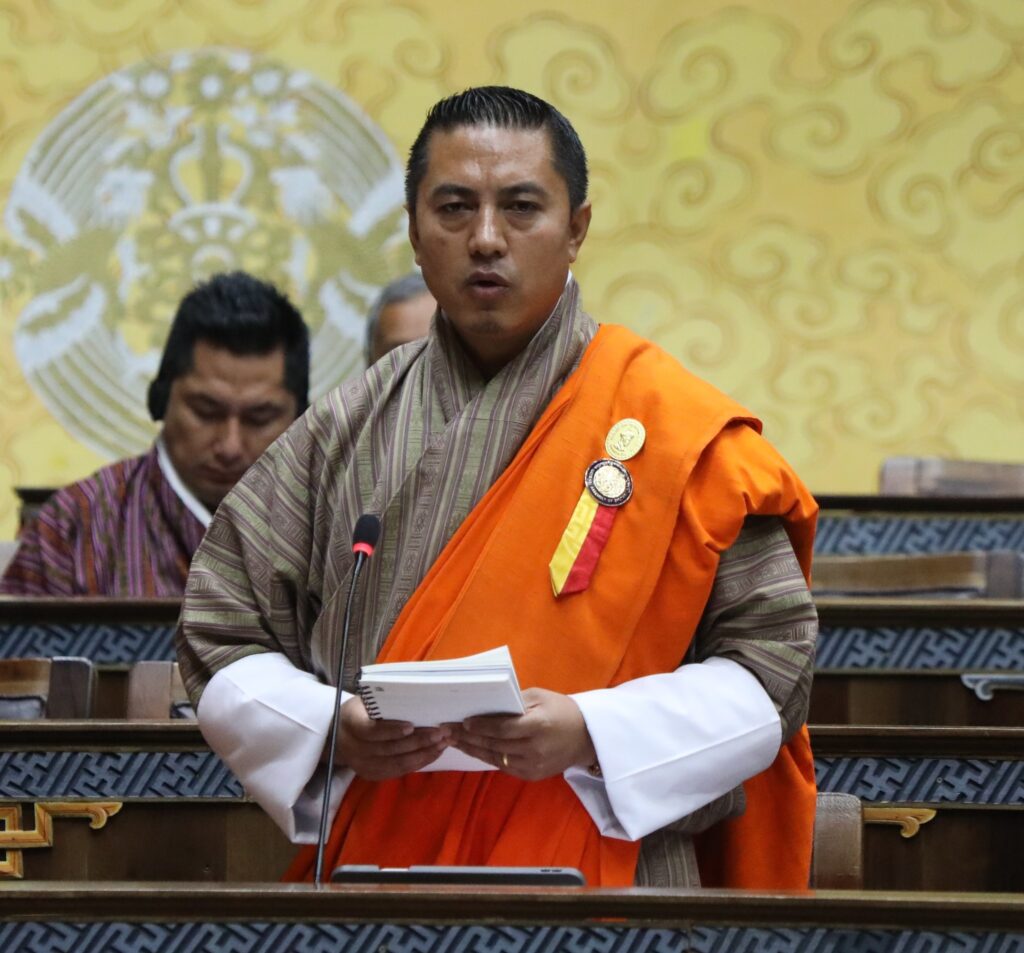
DAWA ZANGMO
Thimphu
The growing concern over the safety of religious monuments was brought to the fore during a parliamentary session on 24 June when the Member from Sergithang-Tsirangtoed Constituency Lhakpa Tshering Tamang posed a pressing question to the Minister for Home Affairs.
Highlighting the vulnerability of sacred structures like chortens and lhakhangs to acts of vandalism and accidental fires, the Member sought clarity on what steps the Ministry is taking to protect these spiritual landmarks.
Central to his inquiry was whether the Ministry maintains a detailed inventory of the sacred relics, or nangtens, housed within these sites and what concrete preventive measures have been adopted.
In a detailed response, the Minister for Home Affairs, Tshering assured the Parliament that the protection of sacred sites remains a top priority for the government.
He began his statement by contrasting Bhutan’s internal peace and spiritual resilience with the turmoil faced by many other countries.
“While many nations are embroiled in conflicts and wars, Bhutan continues to enjoy peace and happiness,” he said.
This state of harmony, he attributed, in large part, to the blessings of Guru Rinpoche, the enduring spiritual legacy of Zhabdrung Ngawang Namgyel, and the visionary leadership of Bhutan’s successive monarchs.
He emphasized that Bhutan, as a deeply spiritual country, is dotted with countless religious monuments including lhakhangs, monasteries, and chortens each housing precious and sacred nangtens.
These artifacts and sites, he stressed, are invaluable to Bhutanese heritage and must be protected against all forms of threats, including vandalism and fire.
Between 2012 and 2024 alone, Bhutan witnessed the destruction of 69 lhakhangs and as many as 1,291 chortens. Such losses are not just structural, but also spiritual, cultural, and historical, he noted.
To mitigate further loss, the Minister informed the House that the Department of Culture and Dzongkha Development under the Ministry of Home Affairs has been tasked with maintaining a detailed inventory of the sacred nangtens.
This department ensures that priority is given to monuments constructed prior to the 1960s, as well as those that hold significant historical and community value.
The inventory process, according to the Minister, is thorough and systematic. Newly built chortens are also carefully documented, including the types of zungs (ritual objects) placed inside them.
Additionally, the Ministry records details related to the property ownership or thram, and outlines formal handover procedures whenever the caretaker or custodian of a monument changes.
These handovers are conducted under the supervision of the Ministry to ensure accountability and consistency.
Addressing the specific concern of vandalism, the Minister elaborated on a multi-pronged strategy adopted by the Ministry.
A major component involves proper documentation and the implementation of clear guidelines and coordination frameworks.
“Caretakers play a crucial role in protecting these monuments,” the Minister said, adding that awareness programs are now regularly conducted to educate caretakers about the importance of maintaining accurate records and understanding their responsibilities.
The use of technology has also been integrated into the protection strategy. CCTV cameras have been installed at important religious sites across the country, and these have proven effective in both deterring and detecting acts of vandalism.
“This has been a game changer in our effort to secure these sacred sites,” the Minister said.
Turning to the challenge of fire hazards, the Minister explained that fire incidents especially those caused by butter lamps have prompted the Ministry to take targeted action.
As a preventive measure, the Ministry has distributed fire extinguishers to major religious institutions.
In addition, fire safety drills have been organized, and both smoke and heat detectors have been installed in key religious sites.
A particularly noteworthy step has been the construction of separate spaces outside lhakhangs for lighting butter lamps, which are commonly linked to accidental fires.
By moving this practice away from the main sanctum, the risk to the structures and the relics within them is significantly reduced.
“We’ve learned from past incidents, and this adjustment has already shown promising results,” the Minister explained.
The Ministry has also prioritized training for both police officers and lhakhang staff. These trainings are designed to equip them with the skills to respond quickly and effectively to fires and other disasters that may threaten religious sites.
Recognizing the growing threat of forest fires especially during the dry seasons the Ministry has further directed all Dzongdags to construct fire lines around the vicinity of lhakhangs to act as barriers against advancing flames.
The measures reflect a larger vision of safeguarding Bhutan’s spiritual and cultural identity.
“Every chorten and lhakhang represents not just a religious space, but also a living legacy of our beliefs, our history, and our people,” the Minister stated.
In addition to these proactive initiatives, the Ministry is continuously evaluating and improving its strategies in consultation with local communities, religious institutions, and security personnel.
Community engagement, in particular, has emerged as a critical factor in ensuring sustained protection.
Local caretakers and community members are often the first to respond to emergencies or report suspicious activities, making their awareness and preparedness essential.
Furthermore, the Minister reiterated the government’s commitment to preserving Bhutan’s cultural heritage for future generations.
“This is not just about protecting structures, but about safeguarding the spiritual soul of Bhutan,” he said.
The Parliament was informed that the Ministry will continue to enhance its monitoring systems, expand its inventory management efforts, and provide resources and training to local institutions and individuals charged with the care of these sacred sites.
The exchange in Parliament brought attention to the broader need for vigilance in safeguarding Bhutan’s religious heritage, especially as modern challenges such as urbanization, increasing footfall, and climate-related risks continue to grow.
The conversation also spotlighted the delicate balance between maintaining tradition and adopting modern technology for preservation.
However, the Minister’s remarks also underscored that the success of these efforts depends heavily on community cooperation and the collective sense of responsibility among citizens, officials, and religious practitioners.
The government’s strategy to safeguard Bhutan’s religious monuments involves a blend of heritage documentation, technological intervention, community education, and emergency preparedness.

